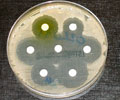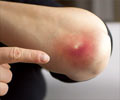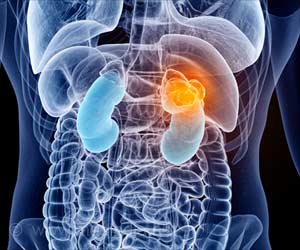A new imaging method developed helps researchers see where antibiotics have reached bacteria within tissues.

‘The new imaging method could be used to help develop more effective antibiotic treatments, reducing the risk of antibiotic resistance.
’





If researchers could select for or develop more effective antibiotics based on where they reach, this may reduce the length of treatment needed, which in turn could reduce the risk of antibiotic resistance developing. In their study, published in PLoS Biology the researchers developed a new imaging method to see where in infected tissues and in cells an antibiotic given to treat tuberculosis reaches the bacteria.
The scientists are continuing to work on the method, adapting it for other types of antibiotic and to image multiple antibiotics at the same time.
Max Gutierrez, author and group leader of the Host-Pathogen Interactions in Tuberculosis Laboratory at the Crick, says: "In the case of tuberculosis, people need to be treated with at least three different antibiotics over six months. We don't yet fully understand why this extended treatment is needed. We hope that being able to more clearly see where antibiotics are going, will help us better understand this process and find ways to improve it."
To develop the imaging method, called CLEIMiT,* the researcher analysed lung tissue from mice infected with tuberculosis and treated with the antibiotic bedaquiline.
Advertisement
Using this method, they found that bedaquiline had not reached all infected cells in the lung tissue and also had not entered all infected areas within infected cells.
Advertisement
Tony Fearns, author and senior laboratory research scientist in the Host-Pathogen Interactions in Tuberculosis Laboratory at the Crick, says: "Our approach could be used to help develop new antibiotics or to re-assess current antibiotics to judge how effectively they reach their targets. The more we learn about how drugs behave in the body, for example where they collect, the better we will be able to treat bacterial diseases like tuberculosis."
Source-Eurekalert















